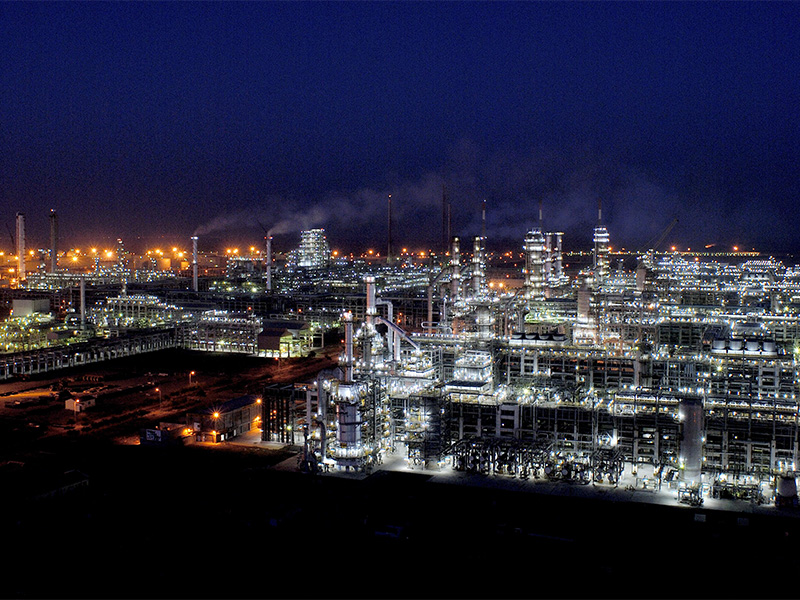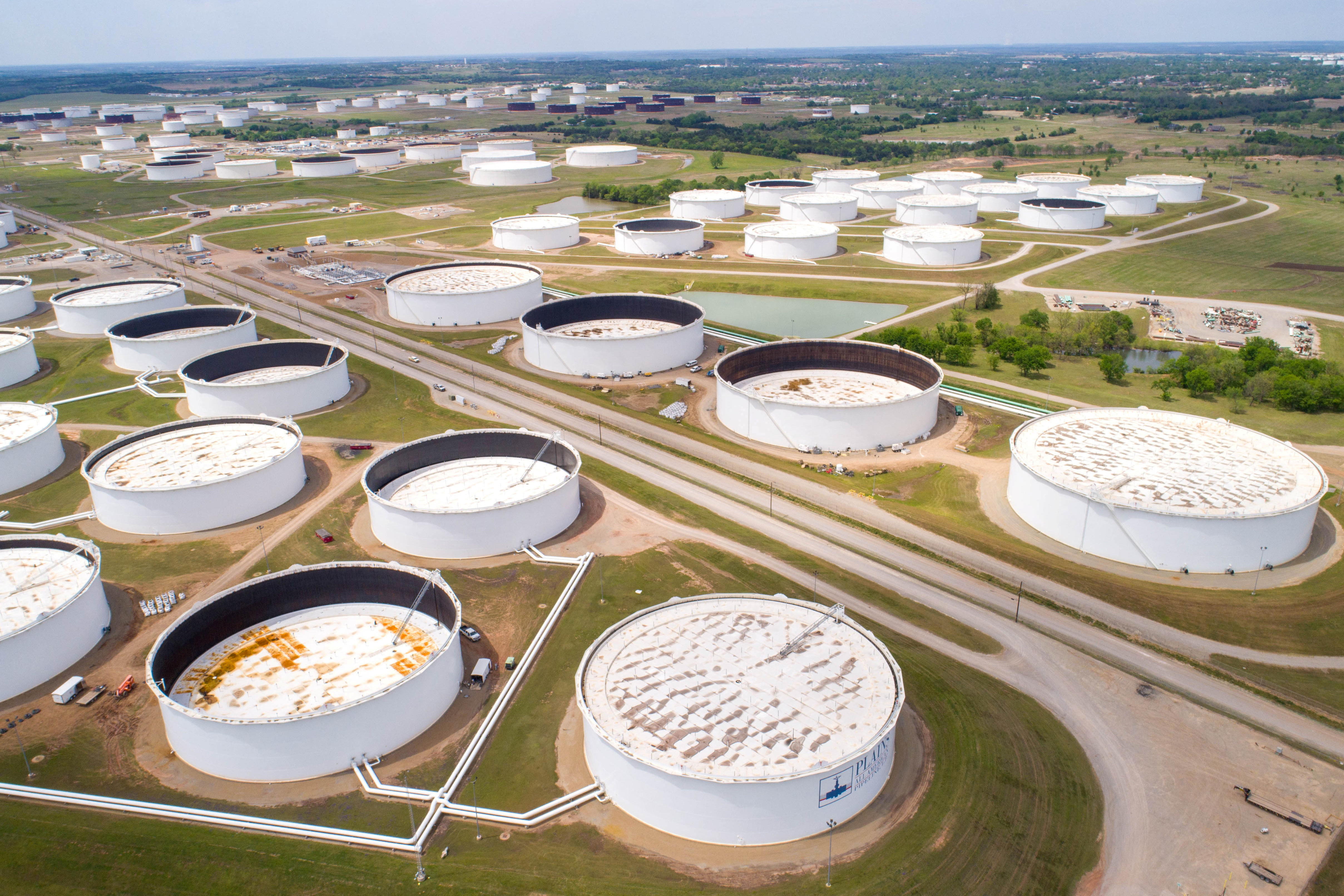
American Oil Stockpiles Surge to Two-Year High After Export Sales Collapse
U.S. Oil Inventories Surge to Two-Year High as Export Economics Falter
Massive 15.4 Million Barrel Build Signals Shifting Market Dynamics as Domestic Production Climbs
American petroleum stockpiles swelled by their largest margin in nearly two years during the first week of September, as a confluence of export constraints and production gains created the most significant inventory accumulation since February 2023. The Energy Information Administration reported Tuesday that total commercial petroleum inventories jumped 15.4 million barrels for the week ending September 5, underscoring dramatic shifts in oil flow patterns that could reshape near-term pricing dynamics.
Commercial crude oil inventories alone expanded by 3.939 million barrels to reach 425 million barrels, representing a 0.94% weekly increase that caught energy markets off guard. The accumulation occurred despite robust refinery utilization rates of 94.9%, suggesting fundamental changes in how American oil moves through global markets. U.S. Commercial Crude Oil Inventories over the past year, highlighting the recent increase.
U.S. Commercial Crude Oil Inventories over the past year, highlighting the recent increase.
| Date | Commercial Crude Oil Inventories (Million Barrels) | Source |
|---|---|---|
| August 29, 2025 | 420.7 | |
| August 22, 2025 | 418.3 | |
| August 15, 2025 | 420.7 | |
| August 30, 2024 | 418.3 | |
| August 23, 2024 | 425.2 |
U.S. commercial crude oil inventories, excluding those in the Strategic Petroleum Reserve (SPR), showed an increase to 420.7 million barrels in the week ending August 29, 2025, from 418.3 million barrels the previous week. This figure for August 29, 2025, is slightly higher than the 418.3 million barrels reported for the week ending August 30, 2024. For comparison, inventories stood at 425.2 million barrels in the week ending August 23, 2024.
The Export Collapse That Changed Everything
The week's inventory surge stems primarily from a dramatic collapse in U.S. oil exports, which plummeted by 1.139 million barrels per day to just 2.745 million barrels daily. This export contraction alone accounts for approximately 8 million barrels that remained onshore rather than flowing to international buyers—more than half of the total inventory build.
U.S. Crude Oil Exports (Barrels Per Day), showing the sharp decline in early September.
| Week Ended | Barrels Per Day |
|---|---|
| August 29, 2025 | 3,884,000 |
| August 22, 2025 | 3,810,000 |
| August 15, 2025 | 4,372,000 |
Market analysts attribute the export decline to persistently narrow price differentials between West Texas Intermediate crude and international Brent benchmarks. When this arbitrage window closes below $4 per barrel, American oil becomes less economically attractive to overseas refiners, effectively stranding barrels domestically.
The WTI-Brent spread is the price difference between West Texas Intermediate and Brent crude oils, reflecting a key dynamic in global oil markets. This spread is critical for understanding opportunities for oil price arbitrage and significantly impacts the competitiveness of US oil exports.
The timing coincides with seasonal maintenance periods at several Gulf Coast export terminals and reflects broader challenges facing U.S. energy companies seeking to maximize international sales. Energy sector specialists note that sustained periods of tight WTI-Brent spreads historically lead to inventory accumulation patterns similar to those observed in the latest EIA data.
Production Momentum Continues Despite Headwinds
Domestic crude oil production climbed by 72,000 barrels per day to 13.495 million barrels daily, though EIA analysts emphasized that roughly 52,000 barrels of this increase reflects technical rebasing rather than pure output growth. The underlying production expansion of approximately 20,000 barrels per day suggests modest but persistent growth in American oil output. U.S. Crude Oil Production (Barrels Per Day) over the past year.
| Month and Year | Production (Barrels Per Day) |
|---|---|
| August 2025 | 13,420,000 |
| June 2025 | 13,580,000 |
| May 2025 | 13,447,000 |
| April 2025 | 13,466,000 |
| October 2024 | 13,530,000 |
| August 2024 | 13,300,000 |
The production figures reinforce expectations that U.S. oil output will remain elevated through the fourth quarter, even as some operators face margin pressure from volatile pricing. Regional production data indicates continued strength in Permian Basin output, with smaller contributions from other major producing regions.
Strategic Petroleum Reserve inventories also increased by 514,000 barrels to 405.2 million barrels, reflecting ongoing government efforts to rebuild emergency stockpiles following historic releases during 2022's energy price volatility.

Refinery Operations Run Counter to Seasonal Patterns
Despite entering the traditional shoulder season between peak gasoline demand and winter heating fuel requirements, U.S. refineries maintained exceptionally high utilization rates. Processing facilities operated at 94.9% capacity while handling 17.41 million barrels per day of crude oil inputs, only slightly below the previous week's levels.

This sustained refinery activity produced notable inventory builds in refined products. Gasoline stocks increased by 1.5 million barrels while distillate fuel oil inventories—including diesel and heating oil—expanded by 4.7 million barrels. The distillate accumulation particularly concerns market observers, as it suggests weakening demand for transportation fuels and potential margin compression for refiners.
Four-week average product supplied, a proxy for petroleum demand, reached 20.888 million barrels per day, representing a 2% increase compared to the same period last year. However, gasoline demand showed signs of softening with a 0.6% year-over-year decline, while distillate consumption remained robust with 2% growth.
Market Mechanics Reveal Hidden Complexities
A deeper examination of the inventory data reveals significant complexity behind the headline numbers. The EIA's petroleum balance sheet showed an "adjustment" factor of 1.222 million barrels per day, dramatically higher than the previous week's 296,000 barrels daily. This adjustment—essentially an accounting reconciliation between calculated and measured inventory levels—contributed approximately 6.5 million barrels to the weekly build.
The EIA "Adjustment" Factor, frequently found in weekly petroleum status reports, is a balancing term that addresses "unaccounted for crude oil." It serves to reconcile discrepancies between reported supply, demand, and observed changes in petroleum inventories.
Energy market professionals interpret large adjustment factors as evidence of measurement timing issues or logistical bottlenecks rather than pure supply-demand imbalances. The magnitude of this week's adjustment suggests that nearly half of the inventory increase may reflect temporary operational factors rather than fundamental market loosening.
Net imports also contributed to the accumulation, with the combined effect of reduced exports and moderately lower imports creating a net inflow increase of 668,000 barrels per day. This swing added roughly 4.7 million barrels to domestic availability over the seven-day period.
Investment Implications Navigate Mixed Signals
The inventory surge presents complex implications for energy investors and traders. Front-month crude oil contracts face immediate pressure from the substantial stock build, potentially widening contango structures in near-term futures markets. However, the significant role of technical adjustments and export economics suggests the bearish signal may prove less durable than fundamental demand destruction.
In futures markets, Contango describes a situation where future prices are higher than the spot price, creating an upward-sloping curve. Conversely, Backwardation occurs when future prices are lower than the spot price, leading to a downward-sloping curve, with both conditions offering investors key insights into market expectations and supply dynamics, particularly in commodity markets like oil.
Investment strategists recommend caution regarding aggressive positioning based solely on inventory data, given the mixed quality of underlying drivers. The export collapse appears linked to pricing arbitrage rather than demand destruction, indicating potential for rapid reversal if WTI-Brent spreads widen beyond $4 per barrel.
Refined product markets present clearer directional signals, with substantial distillate builds occurring during typically tight seasonal periods. Ultra-low sulfur diesel crack spreads—the margin between crude costs and refined product prices—face particular pressure through month-end as inventories exceed typical levels for early September.
A "crack spread" in energy trading represents the hypothetical gross profit margin a refinery makes by "cracking" crude oil into refined petroleum products like gasoline and heating oil. It's calculated as the difference between the market price of crude oil and the market prices of the products produced, often expressed in specific ratios such as the "3-2-1 crack spread."
Regional considerations also matter significantly. Despite nationwide crude accumulation, inventories at Cushing, Oklahoma—the WTI delivery hub—actually declined by 365,000 barrels. This localized tightness provides some support for WTI basis differentials and suggests avoiding overly aggressive bearish positioning on front-month spreads.

Strategic Positioning for Market Professionals
Forward-looking analysis suggests several key factors will determine whether this inventory build represents an isolated event or the beginning of sustained accumulation. Primary among these is the evolution of export economics, which depend heavily on international pricing relationships and logistics infrastructure availability.
Refinery utilization patterns entering October will also prove crucial. Seasonal maintenance typically reduces processing rates during autumn months, potentially limiting further product inventory builds. However, robust margins may encourage operators to delay maintenance longer than usual.
The narrow WTI-Brent spread remains the critical variable for export flows. Historical patterns indicate that sustained differentials below $3 per barrel virtually eliminate U.S. export competitiveness, while spreads exceeding $4 per barrel restore robust overseas demand for American crude.
Market participants should monitor next week's EIA data particularly closely, focusing on whether the large adjustment factor normalizes and whether inventory builds continue with cleaner balance sheet mathematics. A repetition of heavy accumulation without technical distortions would provide stronger evidence of fundamental market loosening.
House Investment Thesis
| Category | Detail | Value / Change | Commentary & Analysis |
|---|---|---|---|
| Report Details | Week Ended / Release Date | Sept 5, 2025 / Sept 10, 2025 | EIA Weekly Petroleum Status Report. |
| Scoreboard | Commercial Crude Stocks | +3.939 mb to 424.6 mb | Nationwide build. |
| Cushing, OK Stocks | –0.365 mb | Draw indicates location-specific tightness. | |
| Total Commercial Petroleum | +15.4 mb | Largest weekly build since Feb 10, 2023. Two-week change +22.5 mb. | |
| Production | 13.495 mb/d (+72 kb/d w/w) | Note: +52 kb/d of this is a statistical rebasing by EIA. Underlying growth is modest. | |
| Imports | 6.271 mb/d (–471 kb/d w/w) | ||
| Exports | 2.745 mb/d (–1.139 mb/d w/w) | Collapse due to narrow WTI-Brent arb hurting export economics. | |
| Net Imports | +668 kb/d w/w | Contributed ~4.7 mb to onshore stock build. | |
| Refinery Runs / Utilization | 17.41 mb/d (–51 kb/d) / 94.9% | Still running very hot into shoulder season. | |
| Products Supplied (4-wk avg) | 20.888 mb/d (+2.0% y/y) | Gasoline –0.6% y/y; Distillate +2% y/y. Demand is not collapsing. | |
| SPR | 405.2 mb (+0.514 mb) | Minimal change. | |
| Build Drivers | 1. Export Collapse | –1.139 mb/d (→ ~8.0 mb for week) | Primary driver. Caused by narrow WTI-Brent arbitrage. |
| 2. Net Import Swing | +668 kb/d (→ ~4.7 mb for week) | Secondary driver. Increased net inflows. | |
| 3. Adjustment (Unaccounted Oil) | +926 kb/d (→ ~6.48 mb for week) | Jump from 296 kb/d to 1,222 kb/d. Major driver; signifies measurement noise/logistics timing. | |
| Market Read | Overall Signal | Bearish for front of curve, but mixed quality. | Large headline build is bearish, but inflated by noisy adjustment and temporary export weakness. |
| Supply Story | Not surging; mostly a rebasing. | +72 kb/d production increase is not a signal of accelerating underlying growth. | |
| Refining & Products | High runs = product builds. Gasoline +1.5 mb, Distillate +4.7 mb. | Margins should compress, especially for ULSD (distillate). | |
| Export Economics | Require WTI-Brent discount >$4. | Spread has been tight; a wider arb is needed to revive exports and drain stocks. | |
| Cushing vs. Nation | Cushing drew while nation built. | Bullish signal for WTI basis at the hub; argues against shorting Cushing spreads. | |
| Demand Health | Stable. 4-wk avg product supplied +2.0% y/y. | This is not a demand-driven bearish signal. | |
| Trade Ideas (Tactical) | WTI Front Spreads | Bias short/neutral. | Cover on arb-widening. Avoid deep contango bets unless next week repeats without large adjustment. |
| ULSD Cracks | Underweight / short bias. | Due to large distillate build and high refinery utilization. | |
| RBOB Cracks | Cautious neutral. | Prefer selling rallies. | |
| WTI-Brent Spread | Fade extremes. Watch for moves >$4 to signal export revival. | Range-bound view ($3-$4) absent a structural shock. | |
| Basis Trades | Modest long Cushing basis / avoid shorting it. | Express bearishness via Gulf Coast-weighted cracks instead. | |
| Key Things to Watch | 1. Next Week's Adjustment | If it normalizes and stocks still build, it's a cleaner bearish signal. | |
| 2. WTI-Brent Arb | Sustained >$4 discount | Would lift exports and relieve inventory pressure. | |
| 3. Refinery Utilization | Expecting a seasonal rollover. | A faster decline would support product cracks. | |
| 4. OPEC+ & Macro Supply | Recent signaling leans toward higher supplies/softer spreads in Q4. | ||
| Bottom Line | Overall View | Tactically bearish, but selective. | Sell front spreads on strength, short ULSD cracks tactically. Avoid over-committing to a deep contango narrative without confirmation from a second week of clean builds. |
Investment decisions should consider that past performance does not guarantee future results, and readers should consult qualified financial advisors for personalized guidance based on individual circumstances and risk tolerance.